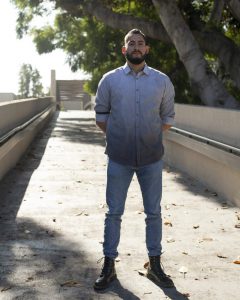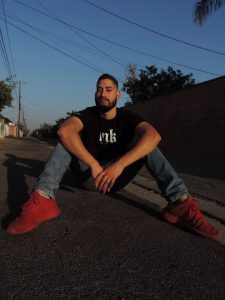By: Ana Aragon
Ni de aqui, ni de alla. Not from here, not from there. It’s a phrase most people of multiple ethnicities have heard and related to.
“I’m not American and I’m not Mexican. I’m marginalized by both groups yet I have to prove to both groups that I’m more Mexican and more American than them,” says Alejandro Plascencia, a native to the United States with cultural roots to Mexico.

Plascencia was born in Santa Ana, California and moved to Mexico at just 3 years old. Even though he is of Mexican descent, he faced identity issues from the very beginning. The people around him would call him güero because of his fair complexion, even though he spoke Spanish and did not know a hint of English. Growing up he was always associated with the U.S. even though he didn’t know anything about the way people lived here
At 12 years old, Plascencia came back to the United States. He was ecstatic when he learned that he and his family were going to make the move back to his native land. He believed he was finally going to be told who he was and accepted by everyone around him. But he did not receive the welcome he had envisioned
“Come here, I find out I’m not accepted either. I’m a beaner. I’m paisa. Even though I’m light.”
Racism and marginalization isn’t something new that has just popped up in recent years. Though we hear more about dual identities now, there was still just as much struggle in previous years. Abraham Quintanillo, portrayed by Edward James Olmos, said it best in the movie Selena, Mexican Americans have to work twice as hard to be perfect: “We gotta be more Mexican than the Mexicans and more American than the Americans; both at the same time.”
In school back in the U.S., Plascencia would get bullied and be marginalized for not being able to speak English. The language barrier also brought him problems because he would ask “¿Que estan diciendo?” “¿Que dijo?” when he didn’t understand what someone was saying, but no one would tell him. The language was a way to poke at him, which brought him a lot of frustrations. He would pick fights with the kids bullying him about his language, but then he’d be the one getting reprimanded for starting a fight in the first place. The bullies always got away and said that teachers wouldn’t side with him because not being able to understand English wasn’t a valid excuse.
This sense of isolation pushed him to become involved with gangs at his school. They included him in their group and didn’t make him feel marginalized. He says, “I remember I would make friends with people that were literally in gangs and they would treat me nice and talk to me. I didn’t really have a choice to pick my friends. I just picked whoever was there.”
Plascencia also found comfort in people who also spoke a different language, even if it wasn’t Spanish. He found himself leaning towards those with similar stories to his because they could relate to each other. “Hanging out with people that spoke a different language, whether it’s Korean or Tagalog, and Spanish obviously,” says Plascencia, “connected me with them because we were able to interact in a way that we could learn from each other.”
The problem was, these groups were often also part of gangs–drawn to them for the same reasons Plascencia was. He couldn’t escape it.
When asked how he identifies in government documents, Plascencia says he just checks the Hispanic box because it’s the only one that identifies his group, his ethnicity. He wants to identify as Mexican as well as American because he has lived half his life here and half his life in Mexico. But, because both groups shunned him, he feels he is neither Mexican nor American.
 “So, not here, not there. Unless they have that box now that says ‘not from here not from there’ then I’ll fill that one out. But until then I’ll just do Hispanic.”
“So, not here, not there. Unless they have that box now that says ‘not from here not from there’ then I’ll fill that one out. But until then I’ll just do Hispanic.”
The more he tried to embrace both identities, the more polarized they seemed. He started meeting people that would only embrace their Mexican heritage and proudly speak Spanish. He also found people that would embrace their American identity and refuse to speak Spanish.
Plascencia ended up speaking both languages at the same time, which is known as Spanglish. He started speaking Spanglish on purpose to make sure he wasn’t repeating the past by being excluded from both sides. It’s his way of merging his dual identities.
He mentions that people still ask him why he speaks Spanish so much. His response: “Why not? It’s part of me. If I want to speak Spanish, I’ll speak Spanish. If I want to speak English, I’ll speak English. Doesn’t matter if you speak English or not, doesn’t matter if you speak Spanish or not; I will speak it. And if you don’t understand it, you can ask. That’s where I started being a little hard headed. I’m not from here or there, so then everybody’s going to fit in to what I am. If they don’t want to they can leave. So I kind of made my own identity in a way.”
